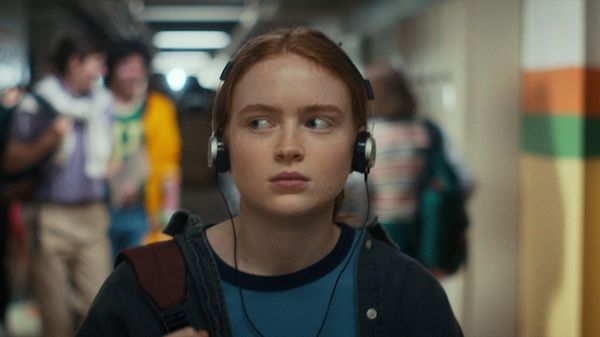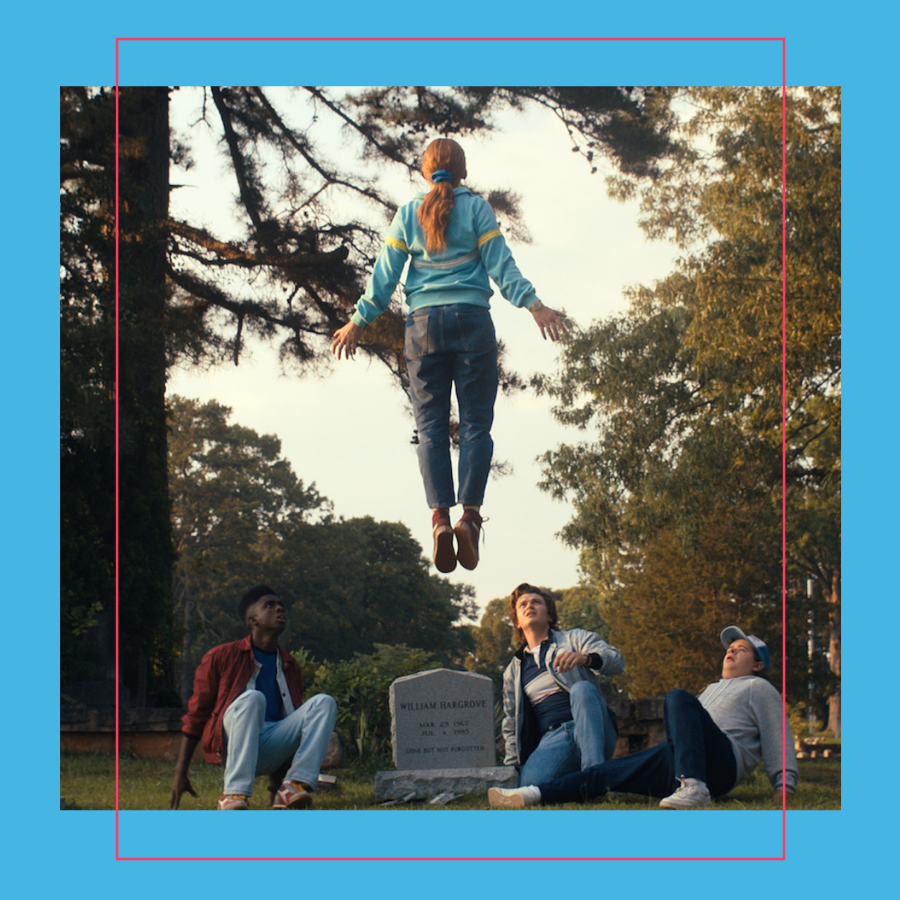Warning: This post contains spoilers for Stranger Things Season 4, Episode 4.
CW: depression
Finally, a show that depicts music therapy as epically as it treats monsters, superpowers and the 1980s! The highly anticipated Season 4 of Stranger Things debuted on Netflix on May 27th, and it’s already sent Kate Bush’s 1985 single “Running Up That Hill” up the 2022 charts. This is thanks to the show’s use of the song as the favorite of Max (Sadie Sink), who starts the season struggling with depression and the trauma of her step-brother’s death. But it isn’t just that “Running Up That Hill” is her favorite song. In Episode 4, the song literally saves Max’s life.
What is Music Therapy?
I first learned about the field of music therapy during my music studies as a pianist at NYU. Despite already valuing music as an essential part of my life, I was surprised to learn just how powerful music can be for mental and physical health alike.
The therapeutic benefits of music have been recognized for hundreds of years, though music therapy as an organized field more officially began in the first half of the 20th century. Music therapy in the clinical sense typically consists of a certified therapist/patient relationship and focuses on individualized needs.
Music therapy is used to treat patients suffering from psychological disorders like PTSD and depression, helps people with physical disabilities and physical rehabilitation, and can play an empowering role in everything from alcohol abuse to Alzheimer’s disease. Because expressive qualities of music can be perceived through sight and touch, music can be used therapeutically for people who are deaf or hard of hearing. Music can also help people deal with physical pain. One study even found that people who listened to music during surgery felt less pain and needed less pain medication than those who didn’t listen to music. (What!)
Stranger Things rightfully elevates music therapy to superpower level—but you don’t need to be threatened with the Upside Down to feel the therapeutic benefits of music.

Music Validates
In the first episode of Season 4, Max is isolated and withdrawn. We see her walk around school with her headphones on (listening to, yep, that Kate Bush song). While these may be the ultimate “do not talk to me” accessory, Max’s headphones also provide her with an important therapeutic technique: mood matching.
It can be incredibly validating to have our own emotional states matched and imitated back to us. Think about parents talking to their babies and matching their sounds; this is how most of us learned how to communicate and how to recognize our own selves in the world. The importance of mood imitation is why we often associate headphones and blasting-music-with-the-bedroom-door-closed with teenagers, who tend to feel extra-charged emotions in a world that can’t always reflect them back.
And mood matching is not only emotionally validating. Studies show that listening to music that matches our mood leads to better cognitive performance and physiological regulation.
Music Transforms
In music therapy, mood matching is usually only the first step of a method that follows the iso principle. The iso principle asserts that meeting a client/listener where they’re at emotionally is imperative. For example, if a music therapist were to work with a depressed teenager, it probably wouldn’t be a successful session if the therapist started it by blasting Lizzo. A music therapist following the iso principle would start with music that validates the teenager’s emotions instead.
However, continuously listening to depressive-mood music can increase feelings of depression, which is when mood matching goes from helpful to counterproductive. The next step of the iso principle is to use music that gradually moves out of that mood. Maybe the next musical experience would have the same energy level, but a more empowering message. Maybe the third musical experience would be a little more upbeat, and so on. (Hopefully my hypothetical team finds the Lizzo State eventually.)
While having our moods validated is important, music’s real power lies in its ability to actually change our moods. A dark song can put us in a dark place. Uplifting music can lift us out of a funk.
Stranger Things knows what it’s doing with its carefully curated ode-to-the-eighties soundtrack. Do you ever notice how after scary or sad or serious scenes, we often hear a fun song to start off the next leg of the journey? For example, Musical Youth’s “Pass the Dutchie” plays in Argyle’s (Eduardo Franco) pizza delivery truck during the bloody and tense shoot-out sequence in Episode 4. While the song contrasts eerily with the drama at hand, it’s also a smart way of caring for viewer emotions: We know we’re putting you through hell; let’s take a breather.
Music Remembers
Nancy (Natalia Dyler) and Robin (Maya Hawke) spend Episode 4 of Stranger Things tracking down Victor Creel, the man who survived Vecna’s murder of his family decades before our protagonists get on the case. Victor (played by Robert Englund, best known for playing Freddy Krueger) winds up at Pennhurst Mental Hospital after his disturbing tale of the spawn of Satan murdering his family is not believed. Now that Max is at risk of being killed by Vecna, Nancy and Robin need to know how Victor survived all those years ago.
Victor’s tale begins with the radio playing Ella Fitzgerald and Louis Armstrong’s “Dream A Little Dream Of Me” during a regular family dinner. Vecna kills Victor’s wife, then gets a grasp on Victor—emotionally tormenting him and making him relive his most traumatic memory. But the sound of Ella Fitzgerald’s voice brings Victor out of the darkness. When he recounts the story to Nancy and Robin, he says: “I thought it was an angel.”
“The angel you followed, who was she?” they ask him. All he can do is hum the music that saved him from death.
Music plays a strong role in our emotional memory. Have you ever heard a song you hadn’t listened to in fifteen years and found you still knew all the words? (It must be magic, right?) This is why music therapy is so often used with people who have dementia or Alzheimer’s disease. Melodies and lyrics can unlock memories for people struggling to remember anything else. For patients with severe memory loss, sometimes the experience of remembering words to a song or the keys to play on a piano is the only connection they have left to their identity. How powerful is that?
Music Soothes
When Nancy and Robin arrive at the mental hospital, the first room they see on their tour is the Listening Room, where they are told how “music can reach parts of the brain that words can’t.” In the Listening Room, one patient plays a piano as others listen to records and use headphones. The atmosphere is peaceful.
Their guide explains: “We found that music has a particularly calming effect on the broken mind. The right song, particularly one which holds some personal meaning, can prove a salient stimulus.” This, of course, helps them connect the dots to know what is needed to save Max.
I probably don’t need to tell you that music is an effective tool for relaxation and for managing stress. Just like music with a faster tempo can get our heart rates going and elevate our moods, music with a slower tempo can relax our heart rates and encourage peaceful feelings. This can lead to better sleep and better mental alertness during waking hours. One study even concludes that listening to music can change brain function as effectively as medication.
Music Saves
Once Nancy and Robin have the answer (Max needs to hear her favorite song, stat!), they relay the information just in time. Max appears to be in a trance at her step-brother’s gravesite, but internally she’s being tortured by Vecna in a fiery hellscape. Science fiction stakes aside, Max is ultimately being forced to confront the darkness inside her. Her friends frantically get her headphones on her ears.
When Kate Bush’s voice gets through to Max, a window to real life appears in Max’s vision. She can see her friends trying to save her. The music connects her with what she cares about and validates who she is. And in this fantastical TV world, Kate Bush’s song literally gives Max the strength she needs to fight the darkness.
Have you ever felt “saved” by a song? NPR music journalist Stephen Thompson explores the question of music’s saving power: “Songs can awaken our resilience, trigger sense memories that redirect our perspectives and help us snap out of despair; most music fans have had a version of that experience at some time or another, in a way that can trigger intense feelings of gratitude.”
Here are a few ideas to make the therapeutic-most of your relationship with music:
- Make yourself a playlist using the iso principle.
- Feeling stressed? Spend 10 minutes listening to music with a slow tempo.
- Blast some tunes from your past (preferably adolescent years) to get more in tune with yourself.
- Try writing or improvising your own song or music or beat. You don’t need any training to have fun with this!
- Or, if you just need to get your eighties on, Stranger Things has your soundtrack ready to go.



Being we just finished episode 4 you article explains the scene perfectly!
Excellent article Lillie!